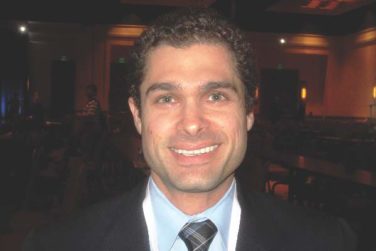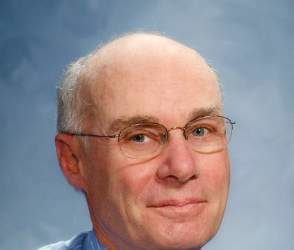AT RHEUMATOLOGY 2016
GLASGOW (FRONTLINE MEDICAL NEWS) – Rituximab is unlikely to work as a treatment for Sjögren’s syndrome, according to a sneak peak of results from a multicenter study.
The study, the Trial of Anti–B Cell Therapy in Patients With Primary Sjögren’s Syndrome (TRACTISS), showed that there were no significant differences between the active and placebo arms in terms of alleviating oral dryness or fatigue, Dr. Simon J. Bowman, a principal investigator for the trial, observed at the British Society for Rheumatology annual conference. In addition, no difference was found in the EULAR Sjögren’s syndrome disease activity index (ESSDAI).
In TRACTISS, 110 patients with primary Sjögren’s syndrome received two courses of rituximab (Rituxan) or placebo in addition to standard therapy, and they were followed up for up to 48 weeks ( BMC Musculoskelet Disord. 2014;15:21 ).
Dr. Bowman, a consultant rheumatologist and honorary professor of rheumatology at the Queen Elizabeth Hospital, Birmingham, England, noted that there was some indication of an effect of rituximab on fatigue and oral dryness in another large, randomized, controlled trial – the Tolerance and Efficacy of Rituximab in Sjögren’s syndrome (TEARS) study – a couple of years ago ( Ann Rheum Dis. 2013;72[6]:1026-31 ), but these were not the primary endpoints of the study, so those results were essentially negative.
Calling the TRACTISS findings something of disappointment, Dr. Bowman said: “I think we’ll have to wait and see, but having had two big formal trials, I have to say that it doesn’t look like rituximab on its own is going to be any [great] success.”
Hopes were high for rituximab 5 years ago, when recruitment into the TRACTISS trial started, principally because drugs like rituximab already were available for use, Dr. Bowman said at the time. The focus was on anti–B cell therapies, because not only were they available but several features of Sjögren’s syndrome potentially are linked to B-cell activity, such as fatigue in about two-thirds of patients, the presence of anti-Ro and anti-La antibodies in about 40% of patients, and lymphoma in about 5% of patients. Also, several small studies had suggested rituximab might prove beneficial.
Other B-cell therapeutic options
Clearly, other B-cell targets might offer alternative therapeutic approaches. One of those under investigation is using belimumab (Benlysta) to target B cell–activating factor (BAFF) or B-cell lymphocyte stimulator (BLyS). Results of the BELISS study, a small, open-label, phase II trial in 30 patients with Sjögren’s syndrome ( Ann Rheum Dis. 2015;74[3]:526-31 ) showed there were some improvements in the ESSDAI and the EULAR Sjögren’s Syndrome Patient-Reported Index (ESSPRI). The improvements were great enough to justify proceeding to a larger clinical trial.
Perhaps the real hope for biologic therapy lies in targeting the T cells for which there is a very good rationale, said Wan-Fai Ng, Ph.D., professor of rheumatology at Newcastle University, Newcastle upon Tyne, England. Various approaches are available, and in addition, there have been some “encouraging” data from early-phase clinical trials.
Abatacept (Orencia), for example, has been looked at in a few trials, with positive drops in ESSDAI and other endpoints, and currently, there is an ongoing phase III trial in 88 patients with primary Sjögren’s syndrome. There are a couple of ongoing phase II trials, one with the anti-CD40 molecule CFZ533 and another with the anti-B7RP1 molecule AMG 557.
Dr. Ng noted that a trial of efalizumab (Raptiva) had terminated because of an increased risk for progressive multifocal leukoencephalopathy. In addition, a couple of other molecules, rhIL-2 and alefacept (Amevive), are under investigation, he said.
Four additional therapeutic targets
Other novel approaches to developing biologic therapy for Sjögren’s were summarized by Dr. Francesca Barone, a senior lecturer at the Queen Elizabeth Hospital in Birmingham, England. She described four strategies, the first of which was targeting the cross talk between antigen-presenting dendritic cells and T cells using a novel molecule RO5459072 that targets a protein called cathepsin S. Cathepsin S is involved in the assembly of the major histocompatibility complex II protein, and by interfering with this process, the theory is that the effector T-helper cell response will be muted and T-cell interaction with B cells will be decreased. A phase II “proof-of-concept” trial is underway with RO5459072 and will recruit 70 patients, she said.
A second strategy is targeting intracellular B cell signaling by targeting P13 kinase delta with UCB 5857. P13 kinase delta catalyzes B cell activation and “is really at the core of the biology of the B cell,” Dr. Barone observed. A phase II trial with UCB 5857 is planned in 52 patients.
A third approach is to target lymphoneogenesis more generally by interfering with the production of the chemokines CXCL13 and CXCL12. This might be achieved via interleukin (IL)–17 and IL-22 blockade. A trial with the novel agent baminercept, a lymphotoxin beta receptor fusion protein. However, that trial was stopped in 2014 for technical reasons.
A fourth strategy is to use combination “sandwich” treatment, consisting of belimumab, rituximab, and then belimumab again. “This is what is going to come next, putting two drugs together,” Dr. Barone said. A randomized, double-blind, controlled trial now open to recruitment aims to investigate whether there is value in this approach.
“We’ve bombarded you with a lot of targets,” Dr. Barone observed. “What do we believe is going to be the best one is very, very unclear.”
TRACTISS was funded by Arthritis Research UK with rituximab provided by Roche. Dr. Bowman did not provide any disclosures but previously has been a consultant for Roche, UCB Pharma, and Merck-Serono. Dr. Ng reported no conflicts of interest, and Dr. Barone disclosed consultancy or collaboration with UCB Pharma, GlaxoSmithKline, Celgene, Eli Lilly, and Roche.




